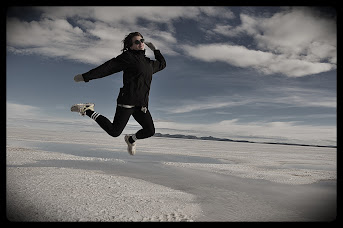Waking up at 4 in the morning is an easy thing to do when you know what you are going to see today. After waiting in a ridiculous line until 530 with numerous other groups before finally being let through the gates and quickly racing the last section of the Inca trail to the Sun Gate to watch the first rays of light hit the ancient lost city of the Incas, Machu Picchu, is something everyone's should and probably will do in their lives.
The Inca Trail hike is a 4 day walk along one of the hundreds of trails that the Incas used stretching from Ecuador, through Peru, Bolivia, and Chile. The 43km long hike starts in the Sacred Valley by crossing the Urubamba River and heads around into the Cusichaca River before climbing over two mountain passes (the first being the infamous Dead Woman Pass at a lung burning 4200m) before descending into Machu Picchu on the final day.
Day 1 begins with and early pickup from the centre of Cusco and a few hour drive out to KM 82 for the start of the trek. The team of blue SAS porters are already there sorting out the gear of the group into massive bags. There were 14 in our group, 4 hungover Irish (post St Pats Day), 2 Brits complaining about something already, 4 Yanks, 2 Canadians and us. For the 14 in our group there were 2 guides and 19 porters (the Cheskis). Each day 200 permits are issued for the hike and because you have to do the hike with a tour company there is another 200 guides and porters. The first day was pretty easy along the valley (some bogan Aussies are even wearing thongs) past the first of many Inca sites before climbing the bottom section of Dead Woman Pass to our camp site. On the way we stopped for lunch where the Chesky's had already set up a dinning tent and cooked a gourmet meal of quinoa soup, chicken curry, steamed veggies with white sauce, salad and local corn with goats cheese! Immediately I realised Ally will never go hiking with me again after our 3 days of tuna on crackers Patagonia trekking diets... And dinner was the same just with different local dishes and and an entree of popcorn. Arriving at the campsite the tents were already set up and we were greeted with warm water to wash in. "SAS is the best".
Day 2 began with a very early wake up with hot tea passed through the fly of our tents, followed by a hot breakfast, coffee, and what seamed like unlimited milo (I did try to eat the whole supplies of milo but I think there must have been a porter designated to just carrying it). It was a slow and long way up to Dead Woman Pass, and the air gets thin at the top. It is along this stretch that we walk along the remains of the original inca trail. Unlike society these days the Incas built things to last for eternity and the cobble stone path is a testament to this. Our group did well and the SAS guides were quick to whip out some oxygen and meds when it was required. The Aussie bogan girls previously mentioned in the other group managed a smoke at the pass though. I was really quite surprised with the size of the mountains in this area, the snow capped peaks sit well above 5000m, and the valleys are deep and a long way down. From Dead Woman Pass it is a steep drop down into the valley to the lunch site and a serving of ceviche, a south American dish of raw freshly caught trout marinated in lime juice. We still had another pass to conquer before descending into camp and more piles of milo.
Day 3 was the most spectacular day apart from Machu Picchu with amazing sections of trail that just hang to the sides of the mountains. After a night of rain we woke to perfect clear skies and great views of the surrounding mountains. The final camp is only a short distance to the lost city.
We however didn't make it to the sun gate before sunrise due to the lines to get through the gates from the last camp, they don't open until 530am. Even though I group was up at 4am others apparently woke at 2am to get in line! Everyone has seen picture postcards of Machu Picchu but to go there and walk amongst the ruins, after trekking for days through amazing diverse landscapes is a must do. Otherwise you can catch a train and a bus and be there in a day....













